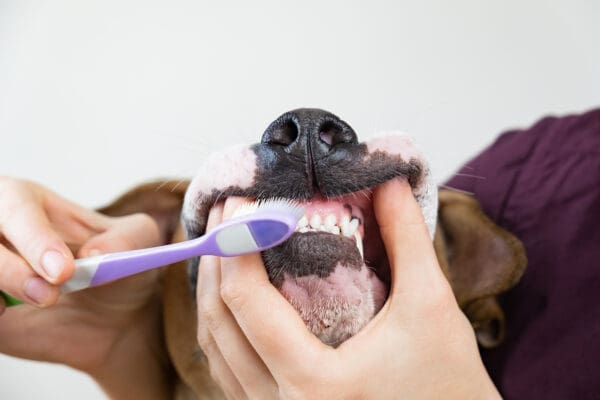Nobody wants to be stuck inside the house all winter long, and pets want to get out just as much. But, although it’s fun to get out, venturing outdoors in freezing temperatures can expose your pet to potential dangers. So we have come up with a list of our top five safety tips to keep your pet safe this winter.
1. Manage your pet’s food intake
Your pets rely on calories from food for energy, just like we do. Calories help give them fuel for physical activities that help keep your pet warm. Each pet needs a different amount of calories depending on its size and coat type. Pets with lower body fat and a thin coat may need to eat more calories during the winter. On the other hand, bigger pets with a thicker coat may need fewer calories during the winter because they are more protected and expend less energy. If you are unsure, check with your vet about how you should be feeding your pet during the winter.
2. Protect your pet’s paws
Even if it is freezing and snowy where you live during the winter, a dog still needs to get outdoors for daily exercise and go potty. Using snow boots on your dog is a must if they will be outside for an extended amount of time. Snow boots create a barrier between a dog’s sensitive paw pads and cold surfaces.
3. Manage outdoor time wisely
Slowly acclimating your pet to the cold winter weather can help them adjust better to freezing temperatures. Before going out, make sure your pet has a leash on and microchipped. Snow can mask scents, and if your pet takes off, it can be hard for them to find their way home. Keep outside time brief and try to go out while it is still light outside, so both you and your pet stay safe.
4. Create a pet first aid kit
During the winter, you may experience more power outages and dangerous roads. If you need supplies for your pet and are unable to get to the vet, you should prepare a first aid kit with the following items:
– Tweezers
– Hydrogen peroxide
– Towel
– Scissors
– Gauze
– Latex Gloves
– Antibacterial ointment
– Cotton balls
– Self-adhesive bandages
5. Know the signs of frostbite and hypothermia
Even though frostbite and hypothermia are rare, they can be fatal to pets exposed to severely cold weather. So make sure to limit the time your pet spends outdoors. Here are the signs of frostbite and hypothermia. If you suspect your pet has either of these, make sure to get them to the vet immediately.
– Frostbite: Pets who get wet are more susceptible to frostbite. Signs include grey or blue skin, swelling, blisters, dead skin patches, and coldness of the skin.
– Hypothermia: This can happen when your pet exhibits body temperatures much lower than usual. Symptoms include muscle stiffness, difficulty breathing, weakness, and even coma.




